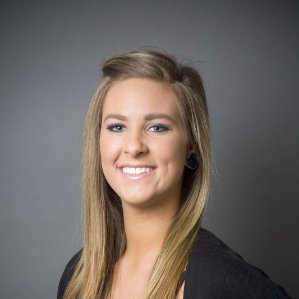March 30th, SOCAP Southwest met to discuss best practices for contact center technology. Bright Pattern was happy to sponsor the event with panelists; Roger Meador, President of TruSource Labs, Andy Salisbury, President of World Connection, and Michael Donalson, VP of Marketing with Eventus Solutions Group.
Darren Prine of Bright Pattern moderated the panel and asked frequently asked questions on contact center technology. The experts provided such great feedback that we decided to provide an outline of the topics that were discussed. Below you can review the technology panel questions and answers.
Q1: What channels are you currently using to connect customers to your agents?
Andy Salisbury: Customers we are dealing with are primarily using email, voice, and chat. We have social media. Not to many of our current customers are using SMS or texting for communications.
Michael Donalson: Similar to what Andrew said, most of our customers are using email, voice and chat, but I would also include self-service. Self-service is one of the most important drivers that we see, including web self-service. IVR is also still out there, everybody hates it, but it is still important. We are starting to see some video, and social is getting big.
Roger Meador: We try to support everything. Social, video over voice and chat, email, SMS. Our customers are starting to use social more and also use self-service communities.
Q2: In the future what additional channels or means of communication do you anticipate and plan to add to your contact centers or your clients contact centers?
Andy Salisbury: I see our customers adding SMS. Everybody is on there phone and I feel like there are going to be a lot more customer needing to be served over text message. Like Darren was showing with Bright Pattern’s technology, SMS and social are going to be channels that people start using more frequently.
Michael Donalson: We are also seeing more people using SMS and social, especially with younger generations. We are also seeing more video.
Roger Meador: SMS is something we are hoping to add more of. Video is also great because it can help to speed up the transaction or interaction.
Q3: Are you using mobile service providers? Omnichannel provider? What type of technology providers are you working with?
Andy Salisbury: Our customers are using a variety of different technology providers. Most of them have their own solutions that they are using.
Michael Donalson: It varies depending on the client, but it is almost all cloud-based technology. Everything is moving to the cloud because it is so much more flexible. Modern cloud technology also has very strong channel support.
Roger Meador: Some clients bring their own platform and other clients want to use our technology, which is Bright Pattern’s omnichannel platform.
Q4: As we start using more channels, how have your hiring programs changed?
Andy Salisbury: You can skills-based rout to agents that are better with one channel over another. For example we have agents that take just sales calls and others that take sales and customer service calls. Just like contact center technology can rout differently depending on what the call type is, you can rout by channel to get the interaction to the best agent currently available. But, you still want everyone to be skilled on all channels because when the best agents are busy, there need to be other skilled agents to handle the various channel interactions.
Michael Donalson: We see different processes, but more commonly there are different profiles where they have certain agents specializing in a specific channel or sector of the company. It does help to have some cross-training so agents can shift as loads change.
Roger Meador: Our potential agents go through two different skill assessments which capture their ability to handle various different channels, and they have to have to pass both. You can’t have an omnichannel contact center with agents that can’t handle different types of interactions. So it does make hiring a little harder, but you have a much more efficient contact center when agents are routed different channel interactions into a single desktop.
Q5: What self-service channels are tools are clients using?
Andy Salisbury: Everyone is trying to get more of the FAQ’s on their websites because it reduces the amount of calls that are coming into the call center. A lot more companies are putting up how to videos which has deduced the live chats and emails they receive.
Michael Donalson: I would say, 90% of the projects we do have a web self-service component. People are also still focusing and using IVR as a self-service tool.
Roger Meador: I’ve been seeing a lot more self-service in communities and social networks, so it is important that these self-service communities are monitored so that if a customer's question isn't accurately answered in the community the company can provide more accurate feedback.
Q6: How well are those self-service channels and tools tied into an overall omnichannel technology platform? For example if a customer is looking through one of the self-service communities and then decides to call into the call center, does the agent have access to the self-service information that the customer was viewing?
Andy Salisbury: For our clients, currently we are not getting that visibility. The clients we are dealing with are not yet to the level where they need the contact center and self-service to be connected.
Michael Donalson: We are technology independent, but this is dependent on what technology provider our client is using. There are certain technology providers that do give agents that visibility.
Roger Meador: We are not currently using that either. But we are doing the back side of that, where the agents point customers to sections in the knowledge base or community where they can receive more information on the topic.
Q7: What CRMs are you currently using and how well are they interacting with the different channels your customers are using today?
Andy Salisbury: Some of our customers are using Salesforce, Gemini and the various different CRM systems out there today. The CRMs are well integrated to the phone system, as well as the other channels, but I would say most of our customers are not using all of the technology provided to them. Even if the CRM does integrate well with all of the channels, most of our customers have not fully created an omnichannel experience yet.
Michael Donalson: We do most of our work with Oracle and Salesforce, which are both pretty rich platforms with a lot of channels. They typically support more channels that most customer need. So most people start with a subset with the plan to add more features and functionality in the future.
Roger Meador: We use several different CRMs, salesforce desk, Zoho and Zendesk. It seems like Zendesk is the most commonly used by our customers and they are great at integrating with all of the channels.
Q8: A lot of people think text/SMS is the next big movement. What are your thoughts on text as an upcoming channel?
Andy Salisbury: I think it will be a strong channel coming up. I don’t think there are very many companies using it right now. But obviously it is coming and people need to start getting ready for it.
Michael Donalson: We are seeing more people wanting SMS integrations and there are some interesting products that you can plug into your CRM that are SMS enabled. We are seeing some people using SMS for proactive notifications. It also depends regionally where you are located. I was at a session the other day where some people were saying in Europe people only want support over SMS, they don’t want anything else. But SMS is also much more established in Europe than it is in the states.
Roger Meador: We are going to start seeing more of it. We just launched a client where SMS volumes are actually 4x their call volumes. Some companies or products lend itself better to SMS support and notifications are a great thing with SMS.
Q9: Do tone and lingo need to match the channel? Are agents allowed to be less formal over channels like SMS and social?
Andy Salisbury: I think agents have a little bit more flexibility, but it kind of depends on the topic and the customer you are interacting with. With any type of customer service or sales you want to mirror the customer as much as possible. So I think in that regard, it depend on who you are dealing with and the tone of their chat coming to you.
Michael Donalson: Those soft skills are definitely things that you look for a train for and they can be different based on the nature of the channel.
Roger Meador: The agent needs to conform to communicating with the customer based on the customer's tone.
Q10: What are your thoughts on social messengers and the role they are going to play in customer service?
Michael Donalson: These are great tools and you can think of them similar to email one-on-one communication. The platforms you use, or messengers you use, is dependent on where your customers are. Fortunately the providers that we work with and some of the cloud contact center vendors support a variety of these messengers and provide social monitoring.
Roger Meador: It depend on what the clients are needing to monitor. Some messengers are very important to some clients, some really want Facebook, others only care about twitter monitoring. It is also important to monitor social communities and provide additional support to clients posting in the communities.
Q11: Is everything we do now just devoted toward millennials? Is this where we should be focusing most of our energy?
Andy Salisbury: I think those segment are definitely growing but you can't let go of voice and email and types of communications that the older generation like to use. But as the younger segments grow, we have to move into the channels that they are wanting to use, so that is why there is currently so much growth in social, SMS and apps. Millennials also prefer self-serving when they can get it, so this segment of consumers has actually reduced customer interactions and calls into call centers tremendously.
Michael Donalson: You see these generational studies that say those who prefer self-service is the highest in the younger generations. In some ways the younger groups have discovered stuff that is actually better. They have helped to change the contact center industry and some of the older generations have chosen to follow.
Roger Meador: I agree, you just have to address whatever channels your customers are using.
From the technology discussion we learned that one of the biggest trends in contact center tech is adding and consolidating channels. As the millennial segment grows, there is a higher demand for a diverse set of channels including SMS, social and mobile applications. In order to provide great service, our technology panel recommended to invest in technology that allows you to support all of the channels your customers use. They also recommend using technology providers that consolidate these channels into an all-in-one multichannel queue that allows agents to easily move between different channels and increase productivity.

